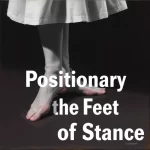Movements in Place: Battement, Fondu, Frappé

Introduction
Ballet is a classical dance form that has evolved over centuries, characterized by its grace, precision, and intricate movements. Among the myriad of techniques and exercises that ballet dancers practice, three fundamental movements stand out: Battement, Fondu, and Frappé. These movements are essential for developing strength, flexibility, and control, and they form the foundation for more complex ballet techniques. This article delves into the intricacies of these movements, exploring their definitions, techniques, benefits, and variations.
Battement
Definition and Types
The term battement comes from the French word for “beating.” In ballet, it refers to a movement where one leg is extended and then brought back, often in a beating motion. There are several types of battements, each serving a different purpose in a dancer’s training:
- Petit Battement: A small, quick beating action of the leg.
- Grand Battement: A large, sweeping kick of the leg to its highest possible point.
- Battement Tendu: The leg is extended to a point on the floor and then returned to the original position.
- Battement Dégagé: Similar to battement tendu but the leg is lifted off the floor.
Technique
Executing a battement correctly requires a combination of strength, flexibility, and precision. Here are the steps to perform a basic battement tendu:
- Start in the first or fifth position with your feet turned out.
- Extend one leg forward, to the side, or backward, keeping the toes pointed and the leg straight.
- Brush the foot along the floor until it reaches a fully extended position.
- Return the leg to the starting position, maintaining control and alignment.
Benefits
Practicing battements offers numerous benefits for ballet dancers:
- Strength: Builds muscle strength in the legs and core.
- Flexibility: Enhances the range of motion in the hips and legs.
- Control: Improves balance and coordination.
- Precision: Develops the ability to execute movements with accuracy.
Fondu
Definition and Types
The term fondu means “melted” in French, and in ballet, it refers to a movement where both legs bend simultaneously, and then one leg extends while the other remains bent. There are two main types of fondu:
- Fondu en Croix: The movement is performed in a cross pattern, extending the leg forward, to the side, and backward.
- Fondu à la Seconde: The movement is performed to the side.
Technique
Executing a fondu requires a combination of strength, balance, and fluidity. Here are the steps to perform a basic fondu:
- Start in the fifth position with your feet turned out.
- Bend both knees simultaneously, lowering your body in a controlled manner.
- Extend one leg forward, to the side, or backward while keeping the other leg bent.
- Return to the starting position, maintaining control and alignment.
Benefits
Practicing fondu offers numerous benefits for ballet dancers:
- Strength: Builds muscle strength in the legs and core.
- Balance: Enhances stability and control.
- Fluidity: Develops the ability to execute movements smoothly and gracefully.
- Coordination: Improves the ability to synchronize movements.
Frappé
Definition and Types
The term frappé means “struck” in French, and in ballet, it refers to a movement where the foot strikes the floor before extending outward. There are two main types of frappé:
- Frappé Simple: A single striking action of the foot.
- Frappé Double: A double striking action of the foot.
Technique
Executing a frappé requires a combination of speed, precision, and control. Here are the steps to perform a basic frappé:
- Start in the fifth position with your feet turned out.
- Flex one foot and place it against the ankle of the supporting leg.
- Extend the flexed foot outward, striking the floor with the ball of the foot.
- Return to the starting position, maintaining control and alignment.
Benefits
Practicing frappé offers numerous benefits for ballet dancers:
- Speed: Develops quick, sharp movements.
- Precision: Enhances the ability to execute movements accurately.
- Control: Improves balance and coordination.
- Strength: Builds muscle strength in the legs and core.
FAQ
What is the difference between battement tendu and battement dégagé?
Battement tendu involves extending the leg to a point on the floor and then returning it to the original position, while battement dégagé involves lifting the leg off the floor after extending it.
How can I improve my balance during fondu exercises?
Improving balance during fondu exercises can be achieved by focusing on core strength, maintaining proper alignment, and practicing regularly. Using a barre for support can also help.
What are some common mistakes to avoid when performing frappé?
Common mistakes to avoid when performing frappé include not striking the floor with enough force, losing alignment, and not maintaining control during the movement. Practicing slowly and focusing on technique can help correct these mistakes.
How often should I practice these movements?
Practicing these movements regularly, ideally several times a week, can help build strength, flexibility, and control. However, it’s important to listen to your body and avoid overtraining.
Can these movements be modified for beginners?
Yes, these movements can be modified for beginners by reducing the range of motion, using a barre for support, and focusing on proper technique. As strength and flexibility improve, the movements can be performed with greater intensity.
Conclusion
Battement, fondu, and frappé are fundamental movements in ballet that play a crucial role in a dancer’s training. Each movement offers unique benefits, from building strength and flexibility to improving balance and control. By understanding the definitions, techniques, and benefits of these movements, dancers can enhance their skills and lay a strong foundation for more advanced ballet techniques. Whether you are a beginner or an experienced dancer, incorporating these movements into your practice can help you achieve greater precision, grace, and artistry in your dance.





